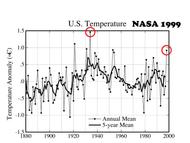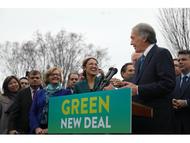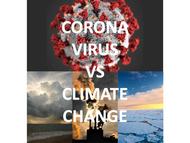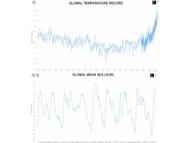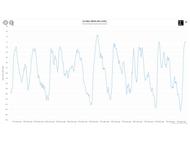The 2020 Democrat Party Platform covers a broad range of topics. The section of the platform dealing with climate is entitled “Combating the Climate Crisis and Pursuing Environmental Justice”.
The section begins with the statement: “Climate change is a global emergency.”, though no source is provided for the emergency declaration. The statement is then “supported” by factual assertions regarding recent weather events and resulting economic losses, though there is no evidence that these weather events were the result of, or were aggravated by, climate change. These factual assertions are then followed by an assertion that: “Thousands of Americans have died.”, suggesting a link to climate change though there is no record of Americans dying from climate change. Finally, the section asserts, counterfactually, that: “Pacific Islanders…are losing their traditional way of life as sea level rise submerges their homelands.”.
The first climate platform plank deals with rejoining the Paris Climate Agreement, seeking increased “ambition” under the Paris Accords from other nations.
The second platform plank commits to investment in clean energy generation and energy efficiency.
The third platform plank to mobilizing youths into a corps and cohort challenged to conserve public lands and deliver clean energy.
The fourth platform plank commits to eliminating carbon pollution from power plants by 2035. It further commits to install 500 million solar panels and 16,000 wind turbines; and, to a “technology neutral approach” to new power generation, including nuclear and carbon capture and storage.
The fifth platform plank commits to making “energy saving upgrades to up to 2 million low-income households and affordable and public housing units within 5 years”.
The sixth platform plank commits to “a national goal of achieving net-zero greenhouse gas emissions for all new buildings by 2030 and to incentivizing tens of billions of dollars of private-sector investment to retrofit 4 million buildings”.
The seventh platform plank commits to “transitioning the entire fleet of 50,000 school buses to American-made zero emission alternatives within 5 years” and transitioning 3 million government vehicles to zero-emissions vehicles. It also commits to “partnering with state and local governments to install at least 500,000 public charging stations from coast to coast.”
The eighth platform plank commits to “apply a carbon adjustment fee at the border” to products from countries not in compliance with the Paris Accords.
The ninth platform plank commits to empowering local communities to become more resilient to the projected impacts of the “climate crisis”.
The tenth platform plank commits to increasing support for wetlands restoration as protection against sea level rise and storm surge.
The eleventh platform plank commits to “require public companies to disclose climate risks and greenhouse gas emissions in their operations and supply chains” and to hold polluters and corporate executives accountable for intentionally hiding or distorting material information and for affecting the health and safety of workers and communities.”
A recurrent theme within the climate platform is the creation of “millions of family-supporting and union jobs”.
The concept of the “carbon adjustment fee”, as stated in the platform, ignores the fact that neither China nor India has made any commitments under the Paris Accords and thus arguably cannot be “not in compliance” with the Paris Accords.
The platform plank regarding public companies seems certain to trigger a flood of lawsuits intended to “milk” the companies to fund the other platform planks.
 The Right Insight is looking for writers who are qualified in our content areas. Learn More...
The Right Insight is looking for writers who are qualified in our content areas. Learn More...



